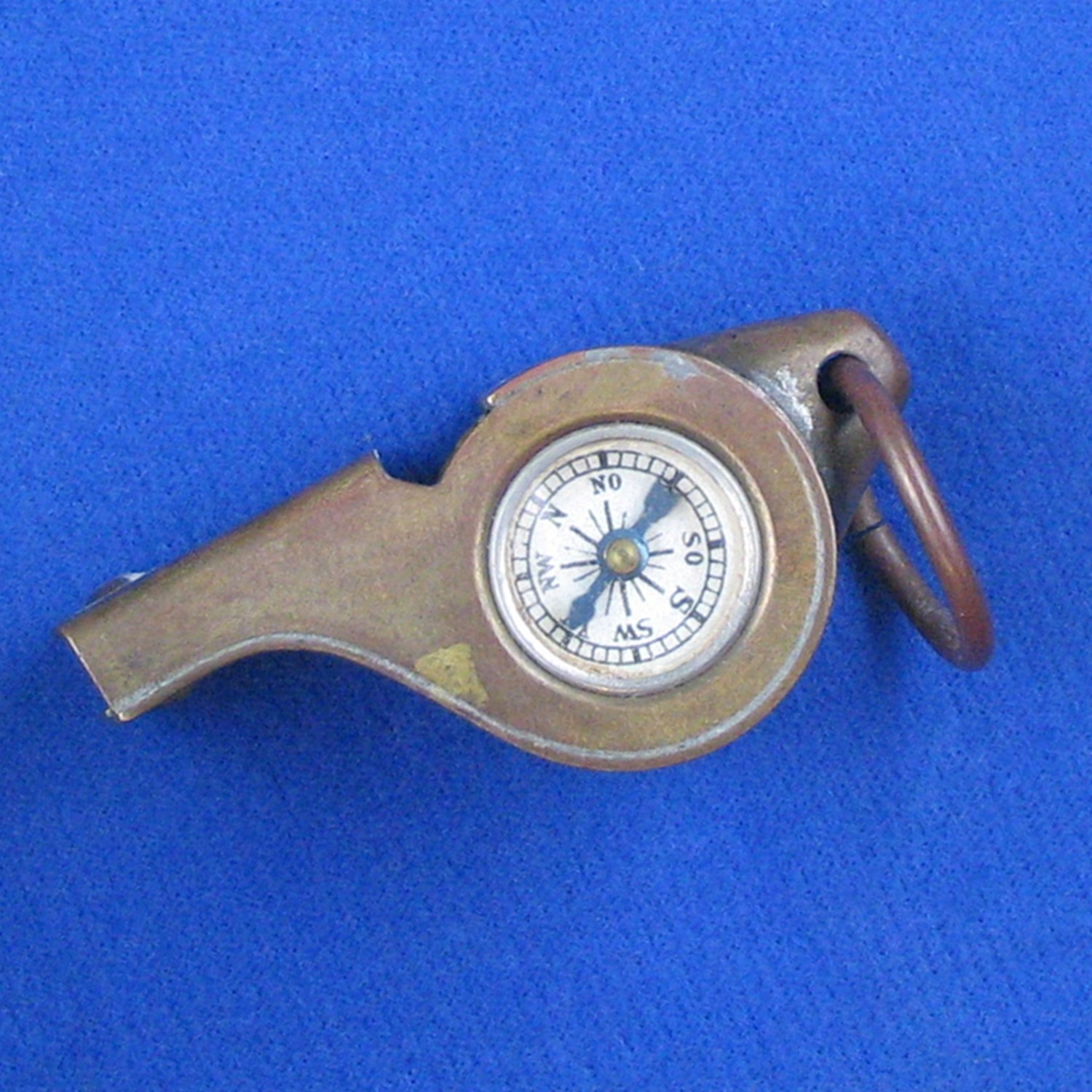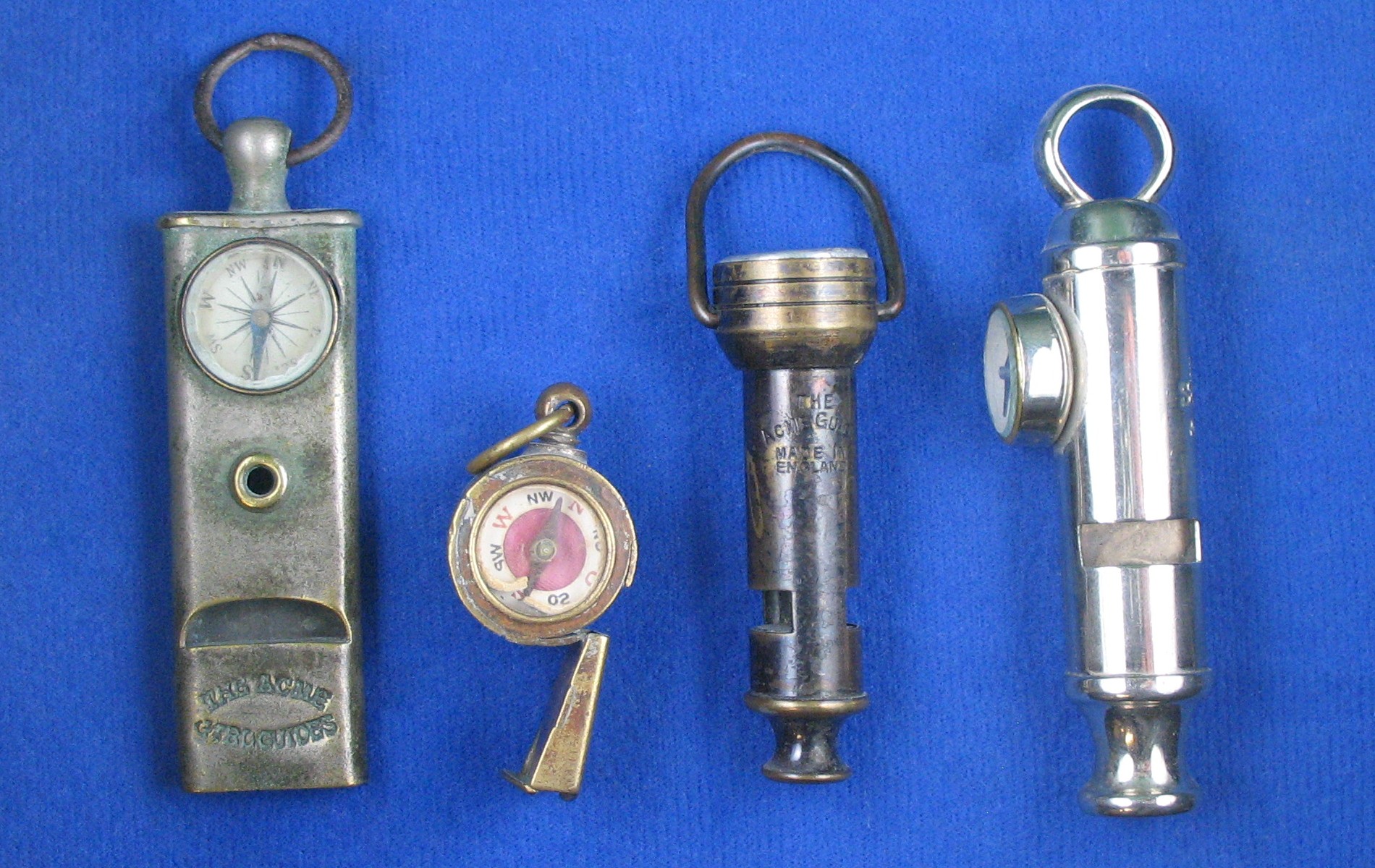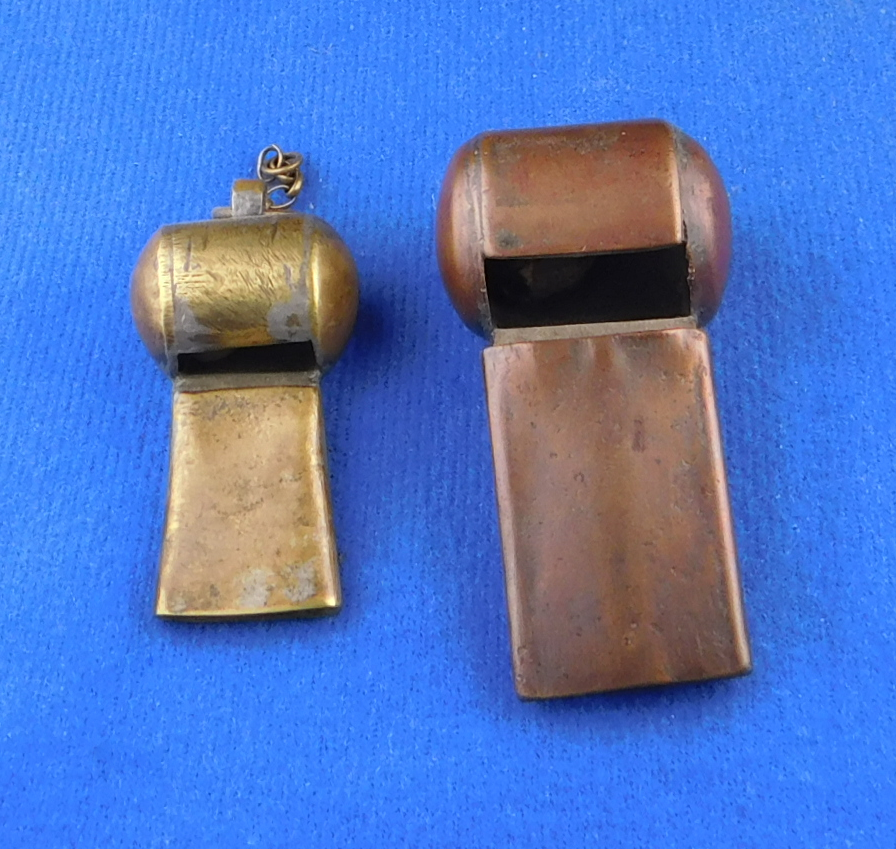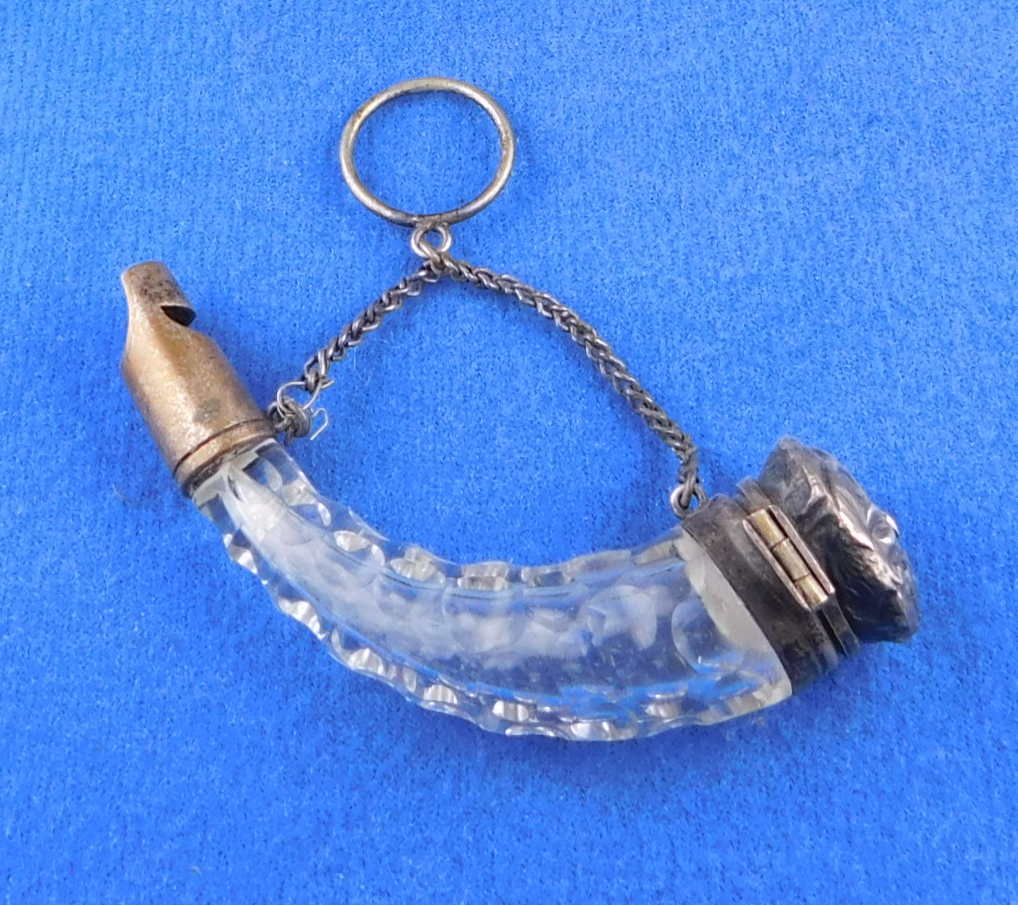Whistle Categories > Compass Whistles

Where did compass whistles originate?
The first patent for a compass and whistle combined is given in Birmingham, UK to Alfred De Courcy. Other manufacturers came along and eventually models spread to the States, France China and so forth.
Most can be discerned where they were made by the stamps on them describing the maker or idiosyncrasies related to certain makers.
However, many do not, and it can be frustrating to pin this down, except for catalog pages showing models such as Germany and France.
Difficulties arise since it was not unusual for whistle making companies were not adverse to marketing through each other’s companies to expand their lines.
How are compass whistles identified?
By attaching a compass to the body which is common it is obvious. Also, by incorporating a small compass into the main body will qualify for this category. The incorporation may be into the top part of the whistle body, either covered with a lid or exposed for view.
Such a limited type of model and be found in a remarkable array of designs. For example, a compass can be recessed into the sidewall of an escargot whistle. It can be set into a flat maiden’s whistle, set into the lid of a vesta whistle, even set into a beaufort or conical whistle.
Why were they made?
Compass whistle stamps indicate that their development was for scouting purposes. This would eventually lead to being used for further hiking needs. Eventually they would be made for decorative embellishments.
Silversmiths were wont to use them in fine silver whistle designs. Some models were made so the glass was used on both sides of the compass, others viewable from only one side.
This design has not been short lived and although made with less craftmanship today still proliferates.

© – All photos with blue background property of The Whistle Gallery reference collection. Please contact The Whistle Gallery for permission of use of any website content. Use of photos without authorization is prohibited.










